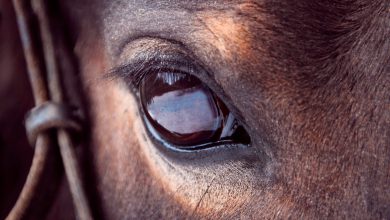Can Dogs Eat Cicadas? Vet-Reviewed Health Concerns

If cicadas have started their emergence in your area, you may be concerned about more than just their high-pitched sound. These flying insects can be irresistible to some dogs, and as a pet parent, you may wonder if ingesting one of these can be harmful to your pooch.
Thankfully, cicadas are not toxic, so they shouldn’t cause many issues for your curious pooch. However, you certainly shouldn’t encourage the behavior, as they may cause digestive upset in large numbers or in dogs with sensitive digestion.
Can Cicadas Be Harmful to Dogs?
Since cicadas don’t sting or bite, and are not toxic, it is relatively safe for your dog to munch on a few here and there. It is natural behavior for our curious doggos to eat the occasional insect whilst out and about. On the flip side, while it’s true that these flying insects won’t sting or bite your pooch, eating too many can cause gastrointestinal upset and so they should not be encouraged to eat them.
Eating one or two cicadas (depending on your dog’s size) shouldn’t cause problems, but due to the crunchy, indigestible exoskeleton, eating too many can lead to nausea, vomiting, and diarrhea. In extreme cases, gastrointestinal upset can result in dehydration and the need for veterinary treatment.
Cicadas are typically too numerous to make pesticides effective, leading to their uncommon use. Although the possibility of your pet eating cicadas treated with pesticides is unlikely, it’s still something to keep in mind.
While it would be rare, it is possible that a dog may have an allergic reaction to eating cicadas. If you notice any swelling of the face, legs, or tongue, take your pooch to a vet straight away. Allergies can also show up as hives-lumpy, itchy skin, excessive drooling, vomiting, and diarrhea. If you have any concerns for your pet’s health contact your veterinary clinic for advice.

How Often Do Cicadas Emerge?
Typically, cicadas appear every 2–5 years, depending on the species, but their cycles can vary. However, what are known as periodical cicadas only appear every 13–17 years, and when they do emerge, there can be millions of them per square acre. The cicada cycle can last for up to 6 weeks, after which they’ll be gone again for up to 17 years while they are in the nymph phase. That said, cicadas can come a bit earlier or later than predicted.
The spring of 2024 was a massive time for cicadas, with two broods, the Great Southern Brood and the Northern Illinois Brood, predicted to emerge at the same time. Luckily, this combined emergence only happens around every 221 years! This affected primarily the Midwest and Southeastern states with an overlap of the two broods in Illinois. During an occurrence like this, it’s important to keep an eye on your pooch to make sure they aren’t gobbling up too many of these crunchy winged insects.
Tips for Keeping Your Dog Safe

Of course, keeping your dog away from cicadas is easier said than done, especially if you’re in an area where a lot of them are set to emerge. While mild stomach upset is the most likely outcome, it can potentially be more serious for smaller dogs who eat too many. Although unlikely, the hard exoskeletons could even cause a gastro-intestinal blockage.
If your dog has munched on cicadas and you notice signs like listlessness, nausea/vomiting, or diarrhea, it’s a good idea to pay a visit to the vet.
Since these insects tend to hatch in mature trees, try keeping your dog away from the areas surrounding these trees.
Offering your dog other outlets for their hunting and munching instincts may help to reduce the number of cicadas they are interested in catching. Playing with tug toys, flirt poles, and a good old fashioned game of fetch a few times a day will help keep them busy. To keep their minds occupied try puzzles, slow feeders or snuffle mats.
Keep your dog on a leash during the walks so you can guide them away from these interesting insects. It may even be necessary for some persistent pooches to wear a muzzle when out and about to stop them from catching and eating too many cicadas.

Conclusion
Cicadas are not toxic and won’t cause any serious harm to dogs if one or two are ingested. However, eating too many can cause gastrointestinal upset, so it’s best to keep your pooch away from them where possible.
If your dog has ingested a large number of these bugs, keep an eye on them for signs of discomfort, and if you notice any drooling, vomiting, or listlessness, a visit to a vet may be in order.
Featured Image Credit: Ashlee Marie, Unsplash



